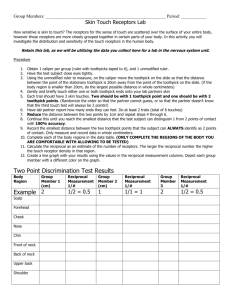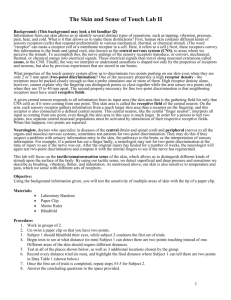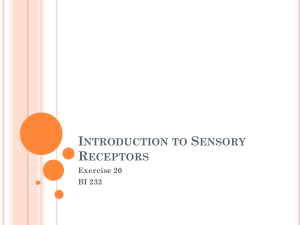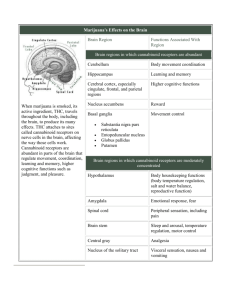Skin Touch Receptors Lab
advertisement
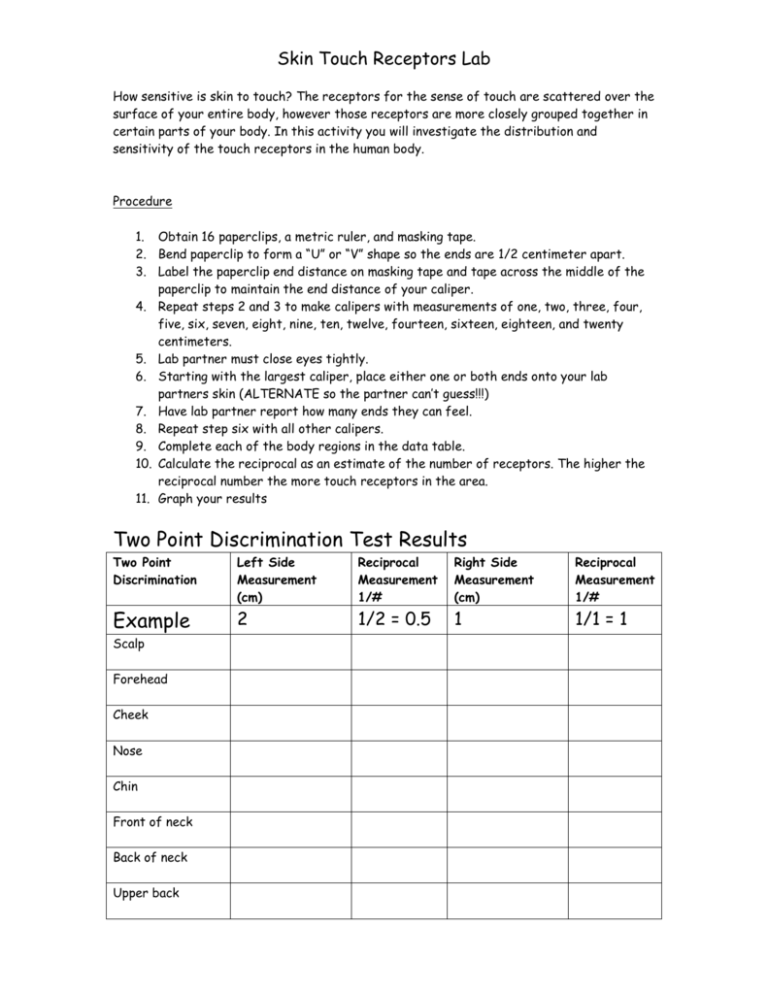
Skin Touch Receptors Lab How sensitive is skin to touch? The receptors for the sense of touch are scattered over the surface of your entire body, however those receptors are more closely grouped together in certain parts of your body. In this activity you will investigate the distribution and sensitivity of the touch receptors in the human body. Procedure 1. Obtain 16 paperclips, a metric ruler, and masking tape. 2. Bend paperclip to form a “U” or “V” shape so the ends are 1/2 centimeter apart. 3. Label the paperclip end distance on masking tape and tape across the middle of the paperclip to maintain the end distance of your caliper. 4. Repeat steps 2 and 3 to make calipers with measurements of one, two, three, four, five, six, seven, eight, nine, ten, twelve, fourteen, sixteen, eighteen, and twenty centimeters. 5. Lab partner must close eyes tightly. 6. Starting with the largest caliper, place either one or both ends onto your lab partners skin (ALTERNATE so the partner can’t guess!!!) 7. Have lab partner report how many ends they can feel. 8. Repeat step six with all other calipers. 9. Complete each of the body regions in the data table. 10. Calculate the reciprocal as an estimate of the number of receptors. The higher the reciprocal number the more touch receptors in the area. 11. Graph your results Two Point Discrimination Test Results Two Point Discrimination Left Side Measurement (cm) Reciprocal Measurement 1/# Right Side Measurement (cm) Reciprocal Measurement 1/# Example 2 1/2 = 0.5 1 1/1 = 1 Scalp Forehead Cheek Nose Chin Front of neck Back of neck Upper back Two Point Discrimination Left Side Measurement (cm) Reciprocal Measurement 1/# Right Side Measurement (cm) Reciprocal Measurement 1/# Shoulder Upper arm Elbow Forearm Wrist Back of hand Palm Tip of thumb Tip of second finger Tip of third finger Tip of fourth finger Tip of fifth finger Front of knee Back of knee Lower leg Back of lower leg Sole of foot Analysis 1. Of the parts of the body tested, which part was best able to distinguish between the closest stimuli? 2. Which part was least able to distinguish between the closest stimuli? 3. What do your results infer about the distribution of touch receptors in the skin? 4. From your lab observations, which part of the body has the greatest number of touch receptors? 5. Is there an advantage for your answer to #4 to have more touch receptors? 6. Was there a difference between left and right side measurements? 7. If there was a difference between left and right side measurements, why do you suppose that occurs? If there was no difference, why? 8. Compare your results with everyone at your lab table. Were there any similarities? Differences?
